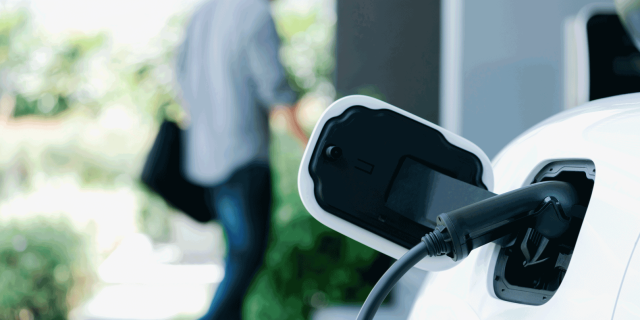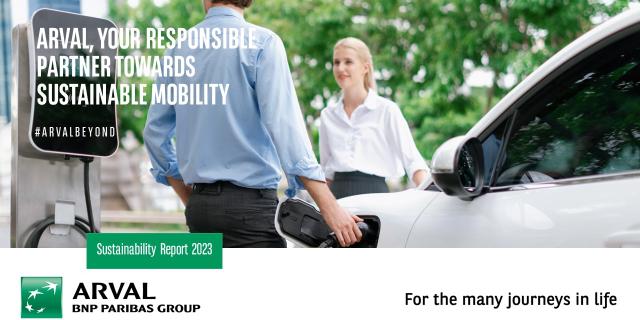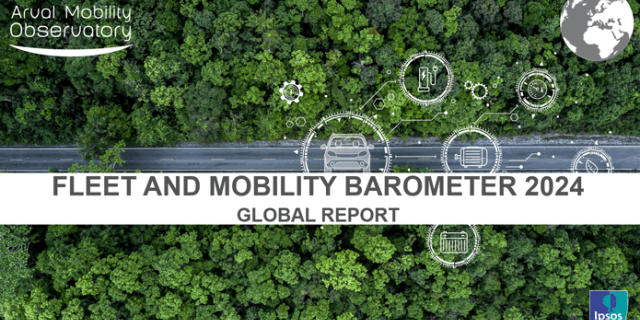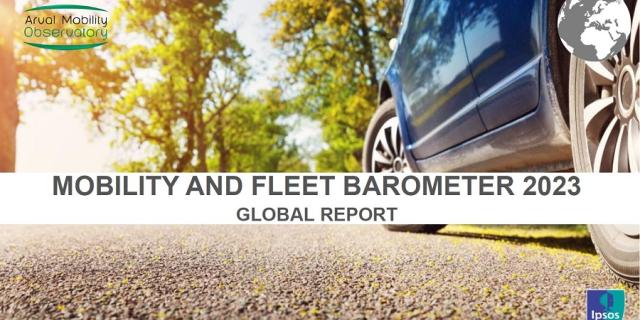HOW BEING A SMART COMPANY CAN MAKE YOUR CFO HAPPIER?
Five years ago, Cardinal Edifice (then 500 employees and 100M€ turnover), a public works and construction company based in Brittany, France, launched an ambitious program to better understand and implement new mobility solutions. It was a fairly unusual move for an SME in this industry, and it was directly sponsored by the CEO. It led to restructuring its works planning with a dedicated software, implementing PLM (Product Lifecycle) methodology, and adopting electric vehicles into its fleet.
Supporters of initiatives that aims to turn a company into a smart company are often found in HR, innovation and fleet management departments, but colleagues in finance can be more sceptical. Mobility is often still seen as a cost factor to be optimised, and electric vehicles, carsharing, training or digital solutions potentially add costs without a direct ROI. But does this mean that this kind of projects have no legitimacy from a business perspective? Or just that we need new approaches to developing mobility projects, and assessing their financial benefits for the company?
We propose three approaches that smart companies have used to align mobility projects, and then will give a few recipes to make smart work for your CFO:
1. MOBILITY FOR INNOVATION
10 years ago, the French postal service & courier company La Poste bought and operated 300 prototype EVs in real conditions for a three-year period. While this was only a tiny share of their fleet of more than 50,000 vehicles, it still represented a significant experiment, and a costly one. The goal was to learn and to assess use cases and business cases for EV in the context of logistics. In fact, the urban logistics use case seems made for electrification: predictable, daily routes of lengths that are well-defined and usually less than 70km. EVs a potential cost-effective mobility solution for the company. One aim of the trial was to find a path to mastering the technological, financial and even logistic challenges associated with the deployment of more than 5,000 Renault Kangoo ZE. La Poste undoubtedly was a French pioneer in the field, but as the saying goes, the leading-edge is the bleeding edge. It went through a costly testing phase where electric vehicles were put under real operating conditions, in order to stress-test the feasibility of the whole project.
In logistics, mobility is a core activity – hence, investment in researching alternatives is seen as more than simply an innovation project. R&D, together with partners, can yield real TCO benefits as well. La Poste’s innovation continued: a dozen H2-powered EVs were tested in 2014; 3-wheelers were codesigned with manufacturers, then incorporated in the fleet; now autonomous droids are on the field, as assistants to pedestrian postal workers in delivery.
Logistics companies have a tradition of vehicle innovation, as it can become a competitive advantage. UPS has historically commissioned custom-designed vehicles to optimise its business model; more recently it has announced the full electrification of its fleet in London. DHL – frustrated with the lack of sufficient availability of fully-electric vehicles – now builds (and sells) its own fully-electric, StreetScooter delivery vehicles. Even food delivery is looking to innovate: Pizza Hut has a new partnership with Toyota aimed at developing self-driving delivery trucks, and is part of Toyota’s e-Palette Alliance).
While larger companies are more prone and equipped to explore smart mobility solutions as an innovation for their company, smaller companies should still pay attention, because this is not only about future cost reductions: this is also about business model innovation and preparing for future (and current) constraints on mobility in cities.
Then comes the first pitfall: how to convince your CFO that beyond an innovation budget, you should actively engage and anticipate on solutions that will bring value to the company tomorrow, in terms of brand, of competitive edge or even new business model?
2. REFRAME THE CALCULATION, AND THE PARADIGM
On the surface, the P&L of a mobility project may look uncertain. If we think about internal project financing in the usual way, the only projects that should be implemented are those that bring actual and direct ROI based on the regulatory and fiscal landscape.
Especially where mobility is a key element of the success of the business, we need to reframe the argument: the risks of delay, downtime, and restricted urban access become real and potentially detrimental to both the bottom line and the brand. Even more, the impact of CO2 emissions must increasingly be quantified and valued on multiple levels.
In fact, CO2 emissions are among the most straightforward examples of an externality that will also have long-term impact on the business itself (through climate change, but more directly through future regulations and costs associated to a legacy). Many large companies have started measuring CO2 emissions across the business and have even self-imposed carbon pricing. Such carbon pricing should be understood as anticipatory on future regulations, and as an alignment of stakeholder goals, rather than of just another tax. Beyond that, it can be a useful tool inside a company, allowing it to make wiser investments and anticipate on future threats.
How does shadow carbon-pricing impact mobility decisions in a company?
Since shadow carbon prices apply to investments and most of mobility is about operational costs (outside of parking spots), this approach makes it little relevant in terms of impact. There is a more radical approach to monetisation, more relevant to mobility: Microsoft tracks its emissions and charges (internally) each department $8 per ton of CO2. Hence, every manager has a tangible incentive to minimising energy use and travel.
La Poste recognises that CO2 emissions also impacts on its brand, and its ability to operate everywhere in the country, more specifically in cities. Their postal and logistics services are now carbon-free, which requires them to monitor emissions, reducing them where possible, and compensating remaining CO2 through projects. This decision engages all staff, from salespeople to field workers. The brand impact is as tangible as the benefit to air quality: La Poste is seen as one of the most trusted brands in France.
3. TRANSFORM YOUR BUSINESS THROUGH MOBILITY
Cardinal Edifice did not launch its mobility program for the sake of innovation. Nor did it implement internal carbon pricing. Its interest was in increasing productivity. While it previously spent €500k per year in fuel (not accounting for vehicles themselves), they saw that mobility could represent up to 30% of paid time for workers on the field for typical works. It was not only about fuel costs and workers, but also about management and engineers wasting their time on unnecessary trips that could have been avoided or replaced by teleconference.
Mobility is a good proxy of your business performance. When working on the mobility of people and goods in your company, as well as those of your clients and partners, you can identify productivity and quality improvement opportunities. Supported by the team at BMA in France, Cardinal Edifice developed an innovative approach to link business performance and mobility.
Translating mobility solutions into time savings, quality improvement or even new value propositions to your customers potentially has a much more significant effect than mere fuel savings. Smart mobility makes your business better.
To summarise:
- First, you need to measure and observe. To raise awareness from top management to field workers, and to define a strategy, information is critical.
- Second, your mobility strategy should clearly state how it will make your business smarter and your brand more attractive. It is not just about fuel savings or costs of mobility. Converting the benefits into and measurable KPIs, translates ambition into figures – which even the CFO will appreciate
- Third, because this is a strategy for mobility, aim beyond the quick wins, toward actionable and meaningful results, that are sustainable and scalable. Having a few electric vehicles for select salespeople or managers, might feel good, but defining how such pilots will transform your company has real impact.
Rethinking your business processes and tools around mobility can be both meaningful for the company, and also bring real results.










